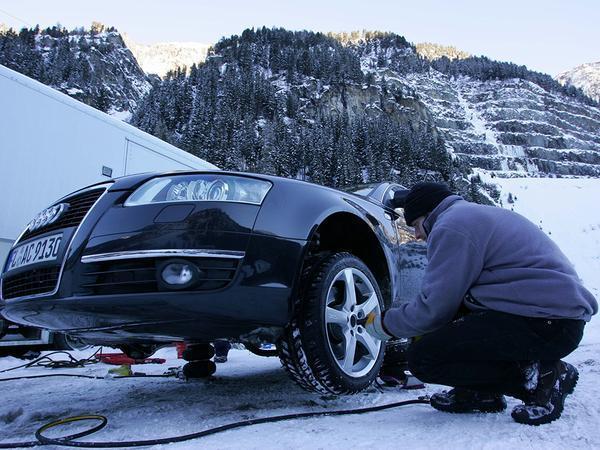Blow out! The modern tyre dilemma
Manufacturers have begun to treat the tyre as an almost indestructible element. It isn't.

That's right, tyres. Take a look at the history of the car tyre. The most recent major development was Michelin's introduction of the radial on the 1948 Citroen 2CV. And while the materials involved have become the subject of much clever science, the basic design is yet to be fundamentally improved upon.
The last big change previous to that was over a century earlier in 1845, when Robert Thomson invented the inflatable tyre. You could argue about that not being such a positive advance because it brought with it (a) the constant need to maintain accurate pressures and (b) the constantly annoying threat of punctures.
BMW tried to rid us of the curse of punctures by bringing the runflat to the mass market. This was a development of Dunlop's 1972 Total Mobility Tyre, later the Denovo, which was itself predated by a mid-1930s runflat concept (again by Michelin).
It was a bold move by BMW, given the car tyre's dogged resistance to change. Unfortunately, anyone who has driven a car on runflats will be able to give you an instant insight into why engineers have so far been quite reluctant to take on the challenge of creating a more modern means of separating a car from the road.
So, for the time being at least, it seems we will be continuing with deflating, deforming, puncturing tyres.
As we chug through the salt-caked twilight world of UK winter motoring, here's a seasonal message for owners of post-'02 Volvos. If you get a puncture on Shap Fell in the Lake District in the middle of a blizzard, think of me. I may possibly have saved your life/afternoon.
The story starts many years ago, not in a Volvo but in a diesel Shogun. Not the most obvious choice for a fast dash back to the UK from a photoshoot in southern Spain, you might think, and you'd probably be right there, but that's what we had on account of how it was a Mitsubishi Shogun photoshoot.
Despite what you may have read elsewhere, and despite the Shogun now being in its 36th year of production, this chunky Mitsubishi remains well worthy of your consideration if you're after the motoring equivalent of a shire horse. Especially now that the Defender is about to be replaced by what looks like yet another variation on the Discovery theme.
Strong, obedient, comfy, and reassuringly high, the Shogun is very well suited to school runs and other urban intimidation work. My affection for this bear-like vehicle began in a boggy field near Almeria. It blossomed into full-blown love when we had a front tyre blowout approaching the Franco-Spanco border.
Some folk seem to have a lot of punctures. Others, surprisingly few. Members of the second group like to put it down to a combination of gimlet-sharp observational skills and expert driving. Those in the first group blame their misfortune on the whimsy of Lady Luck.
Car manufacturers, for their part, maintain that today's tyres rarely get punctured. That's why they make little or no provision for when they do, and why the frustration factor when tyres do burst - which, as we're told, they don't - is always high.
Unless you're in a 2000-on Shogun, that is. Our one came (and for all I know, later models still come) with a proper puncture fix kit: bottle jack, extending arm, Dakar Rally-quality wheel brace, nuclear-powered airgun, the works. They even gave you the right socket for the locking wheel nuts.
All of this might seem shoutingly obvious - but it wasn't to Volvo in the early 2000s. My puncture story, which is too long for full exposure here, started with a screw in a Volvo V70 T5 tyre and ended up several weeks (and much screaming) later with Volvo having to send the whole car away to a specialist to have the wheel sawn off it.
The onboard puncture repair equipment provided was woefully inadequate. The charmingly delicate dessert spoon we found in the tool kit was apparently supposed to be the wheel brace. This was surprising considering Volvo's own rallying history and the weather conditions regularly encountered in Sweden.
To the company's belated credit, my incident resulted in a national recall on that Legoland wheel brace, but I do still wonder what would have become of me if the offending screw had been picked up on a deserted Highland fell in midwinter rather than on my suburban drive in spring. That's the thing with screws. You never know where or when your next one will come along.
Still, it could be worse. Try sorting out a puncture on a chain-driven motorcycle using only the tools provided by the manufacturer, ie one compressed tin 'multitool' (bent), two plastic circlips (broken), and a pewter screwdriver (Xmas cracker spec). Because you're a biker, and mainly a man, you'll make it work, but there'll be plenty of swearing on the way. All for the lack of an invulnerable modern tyre.
Gassing Station | General Gassing | Top of Page | What's New | My Stuff







